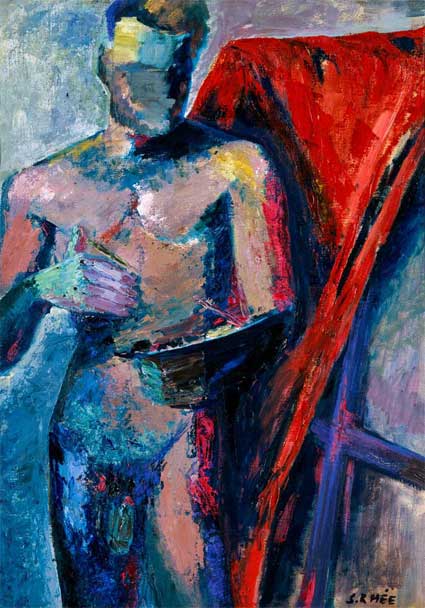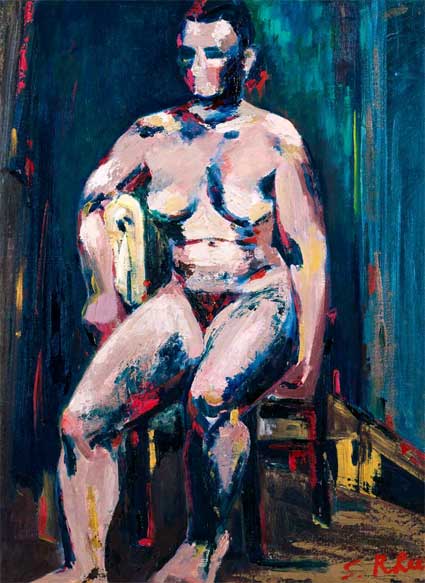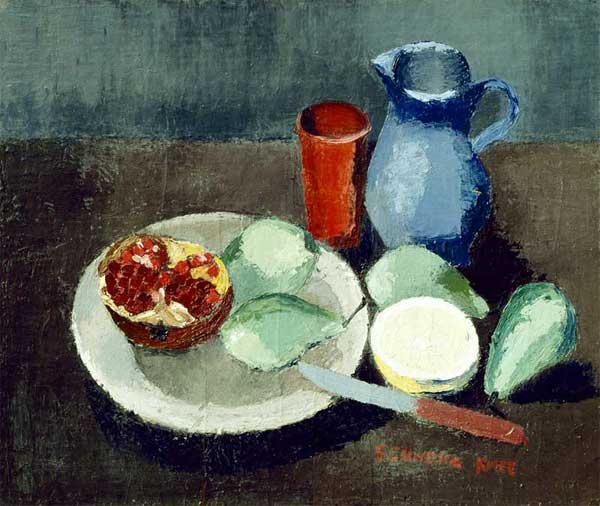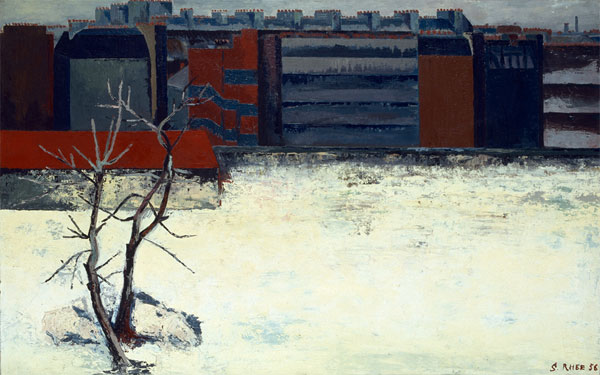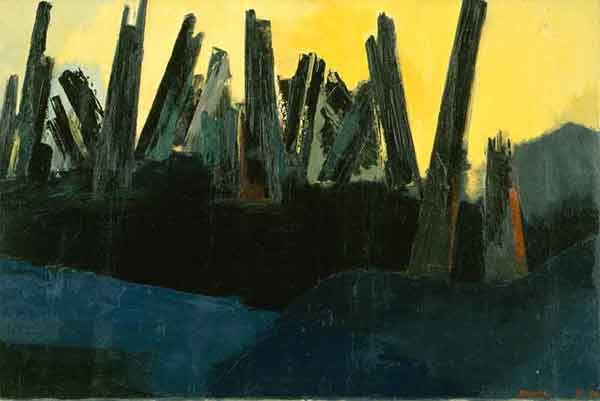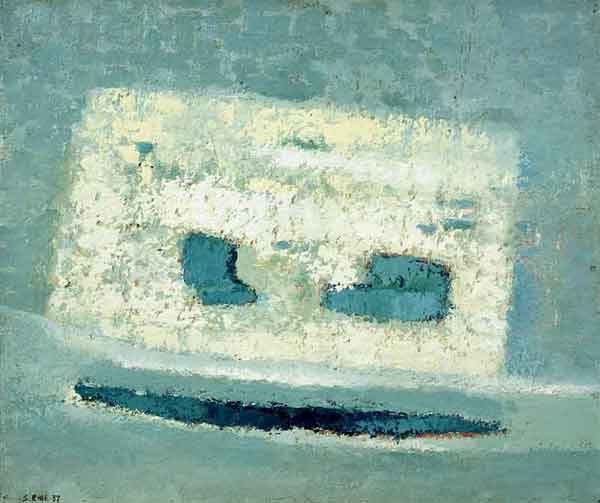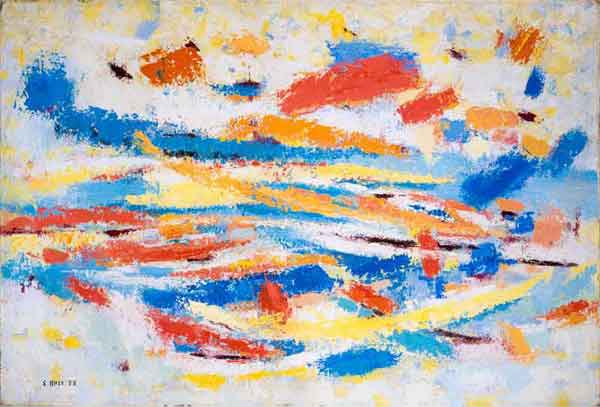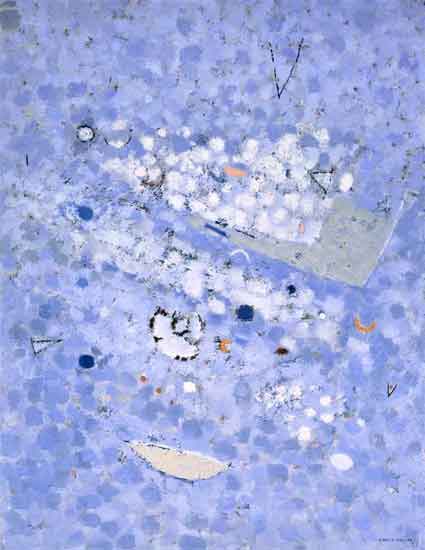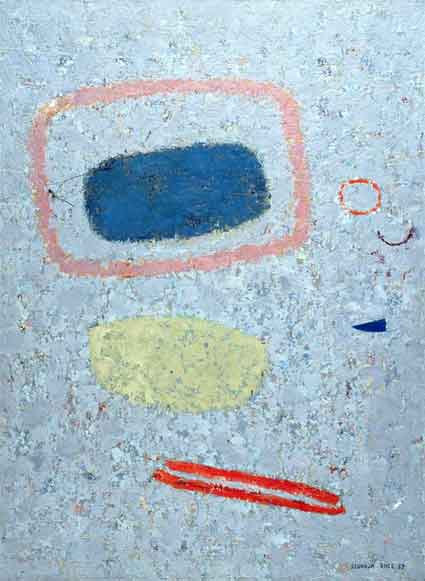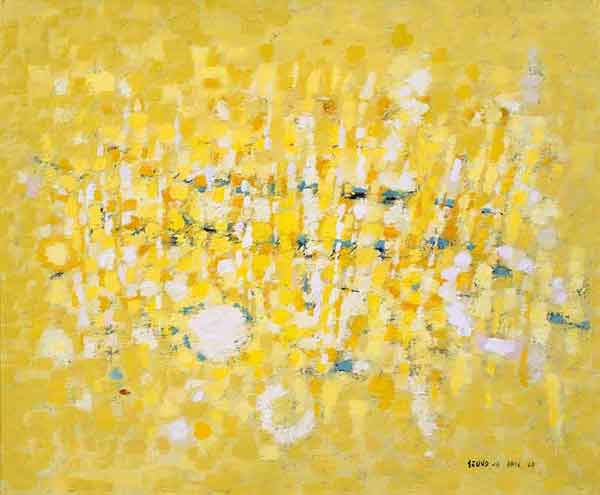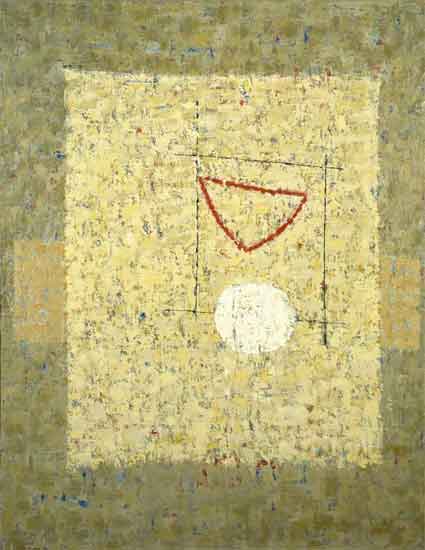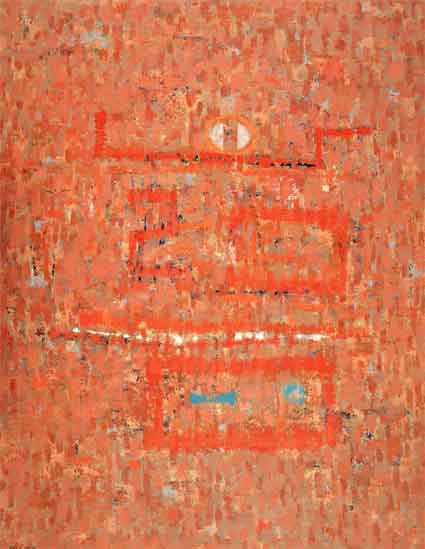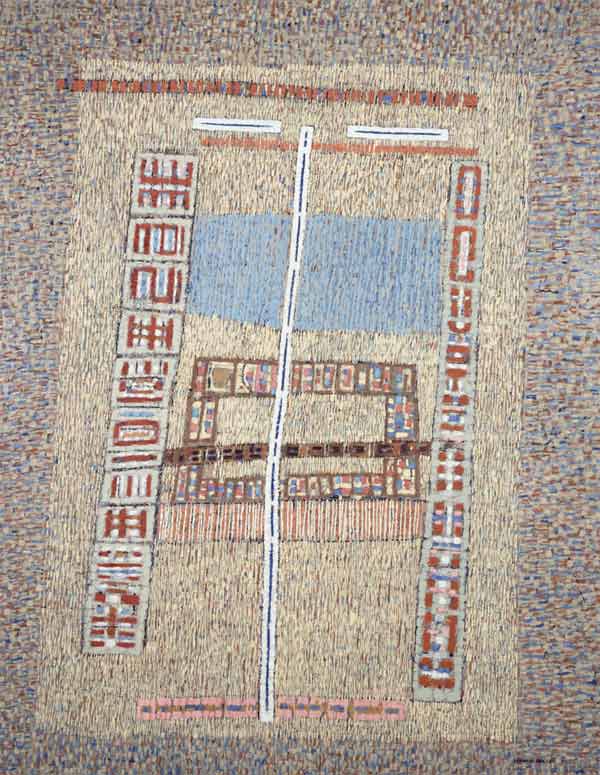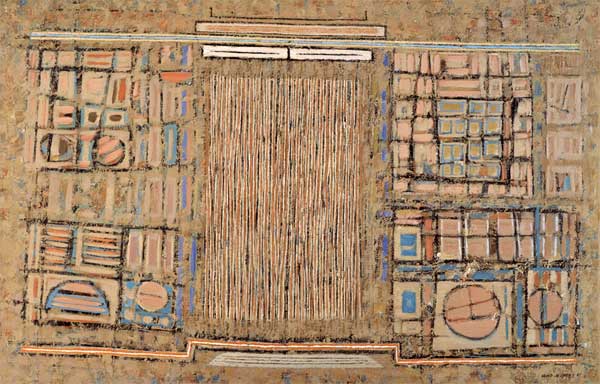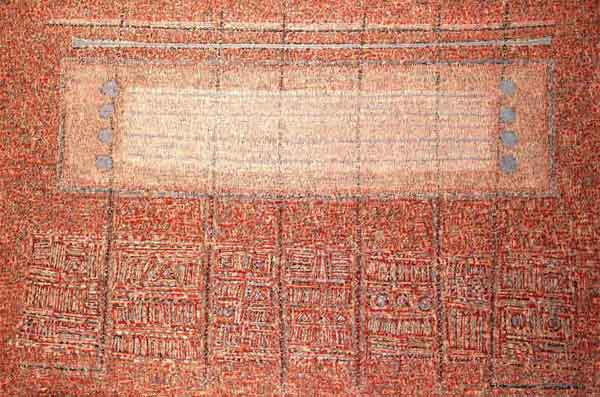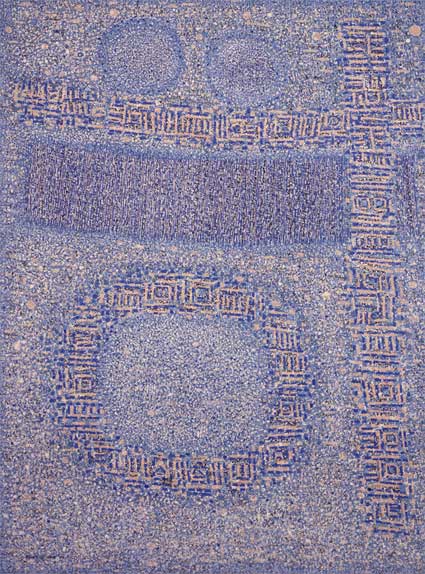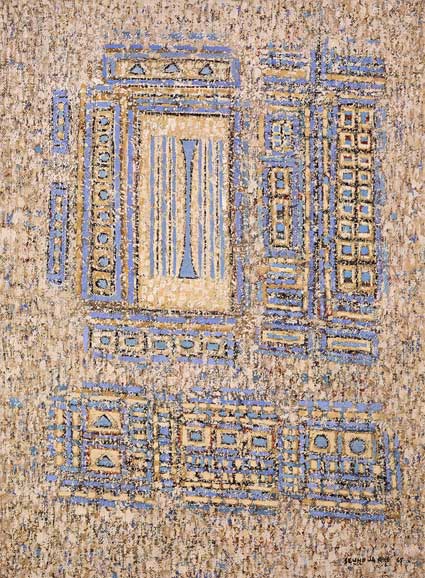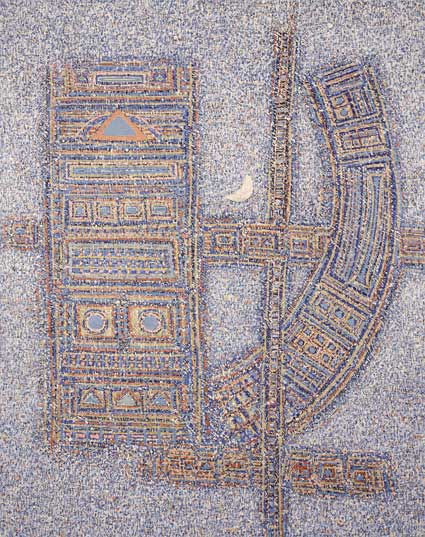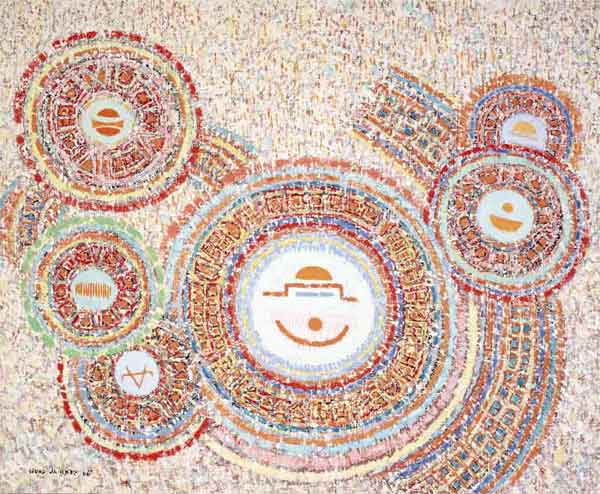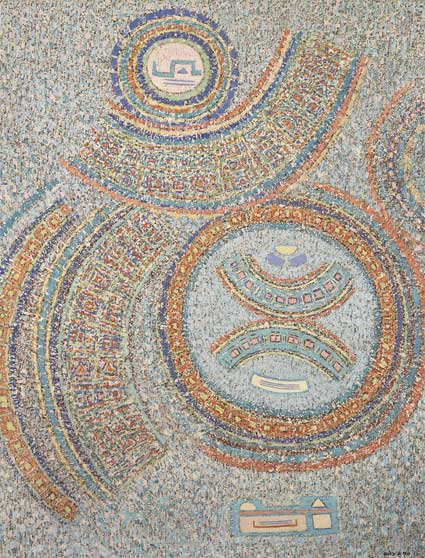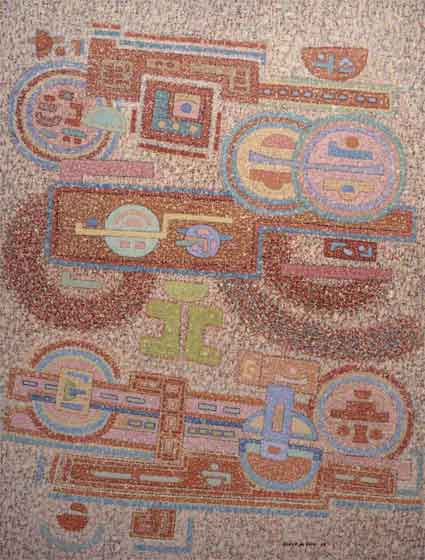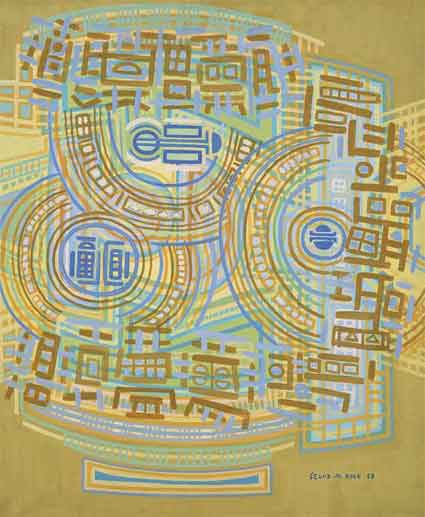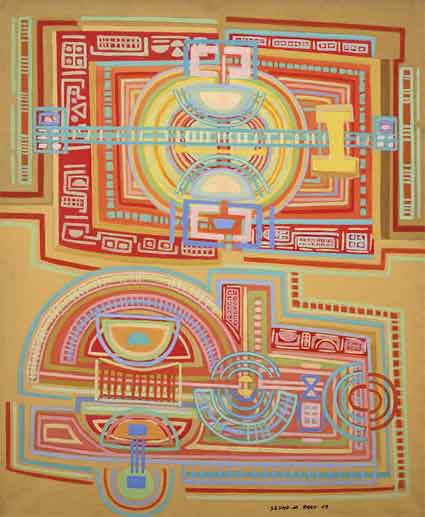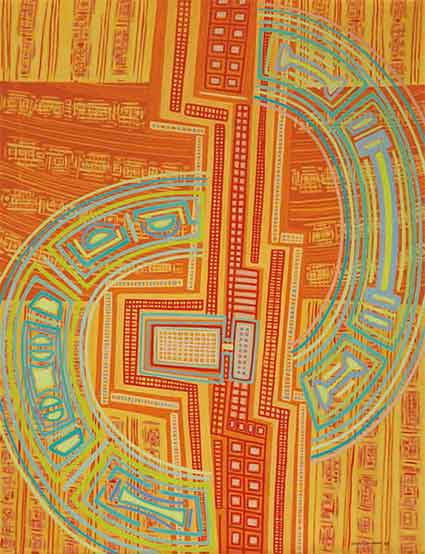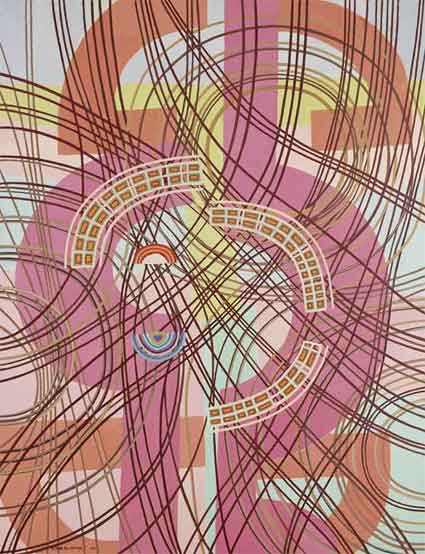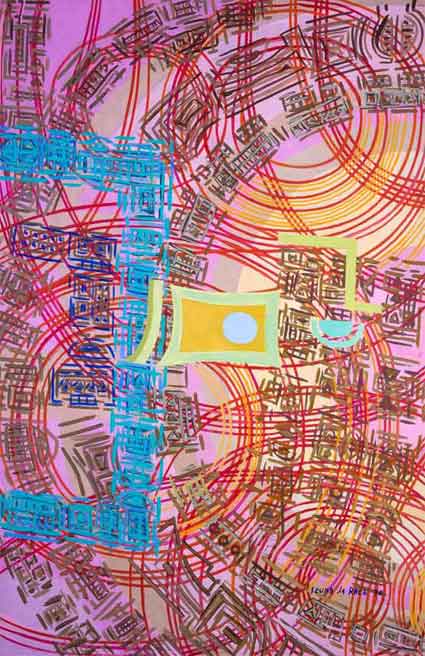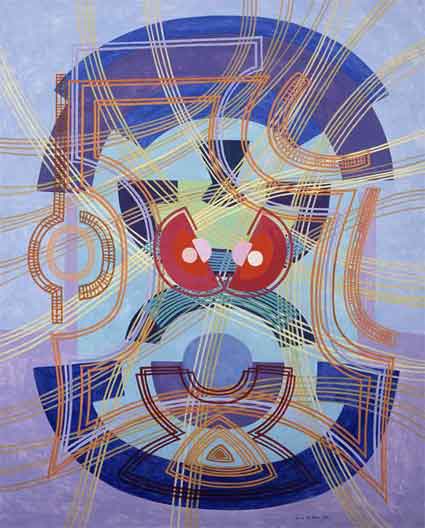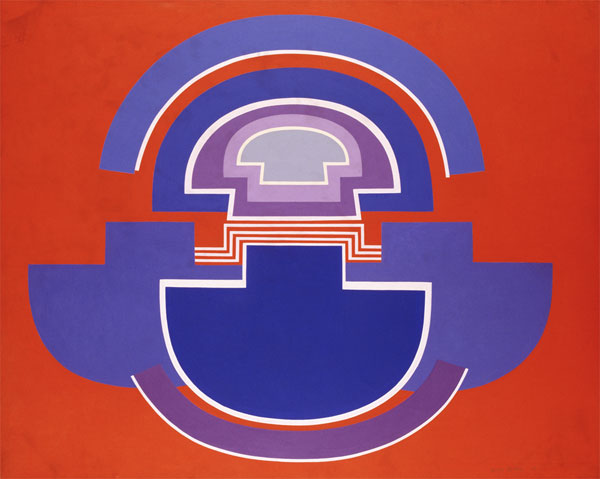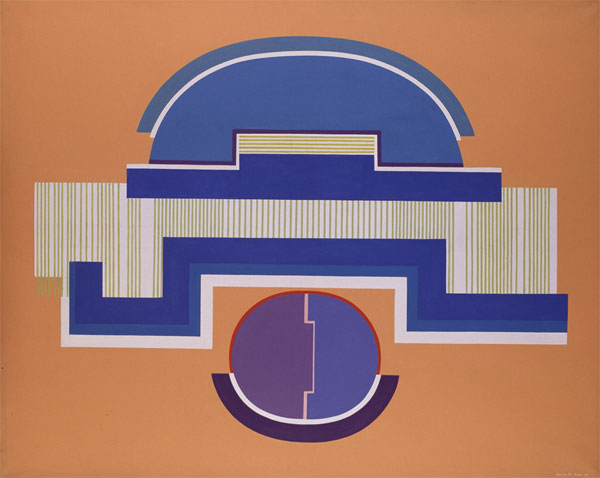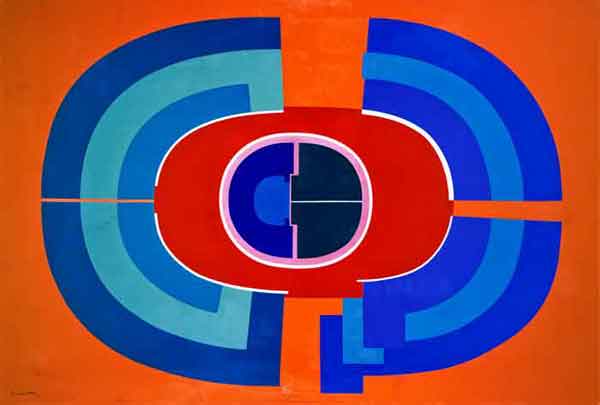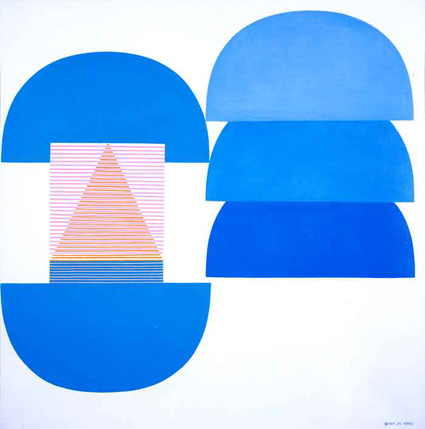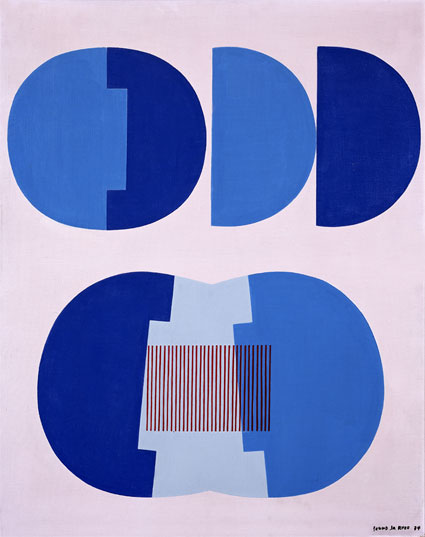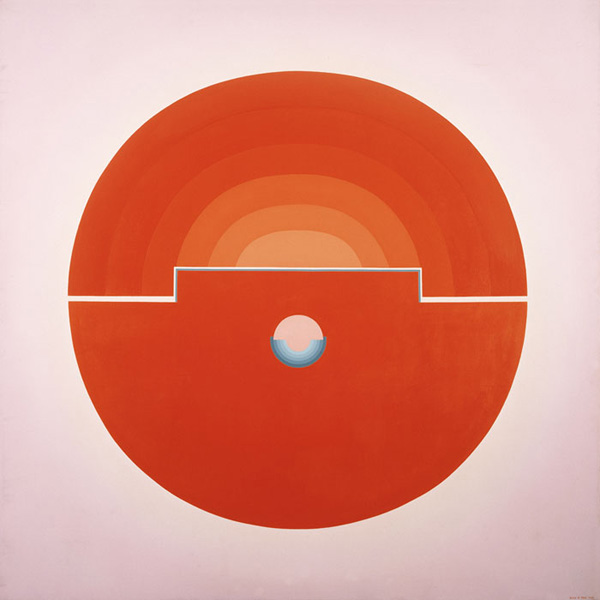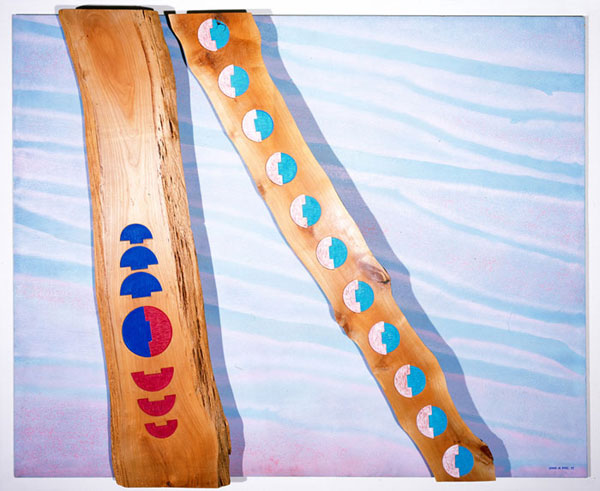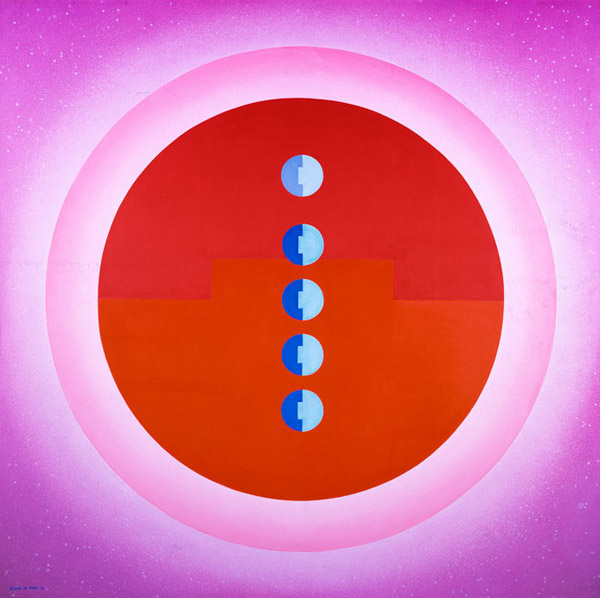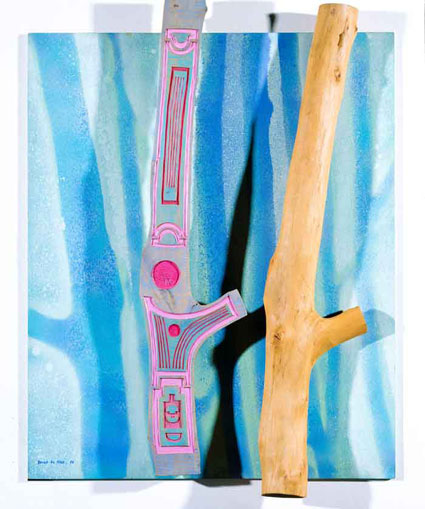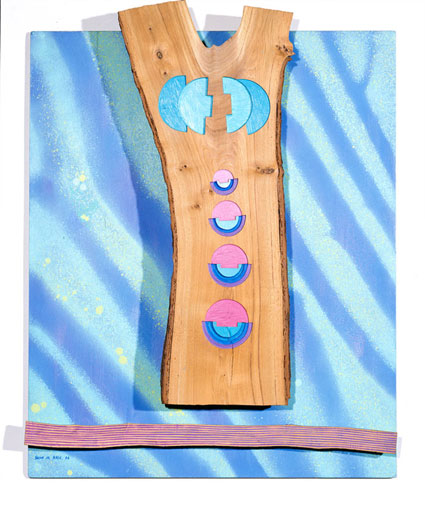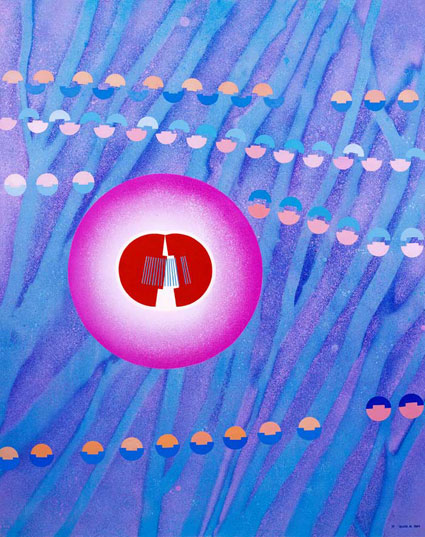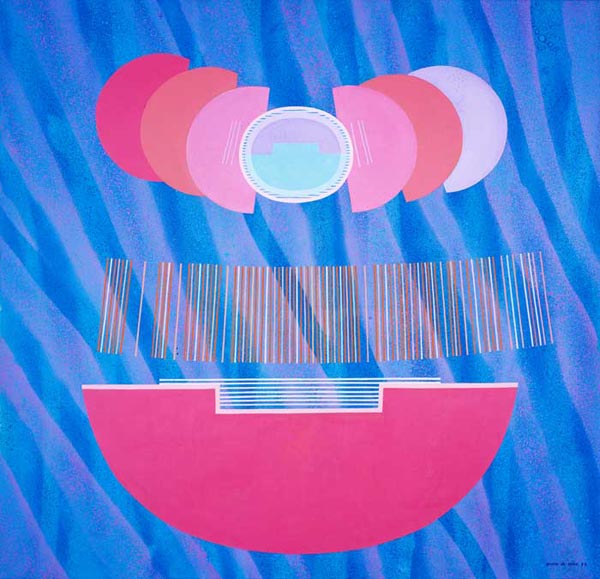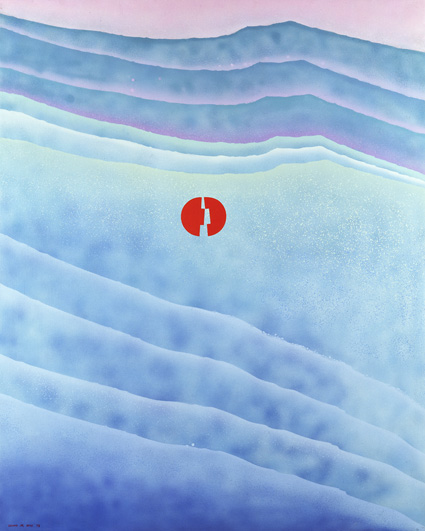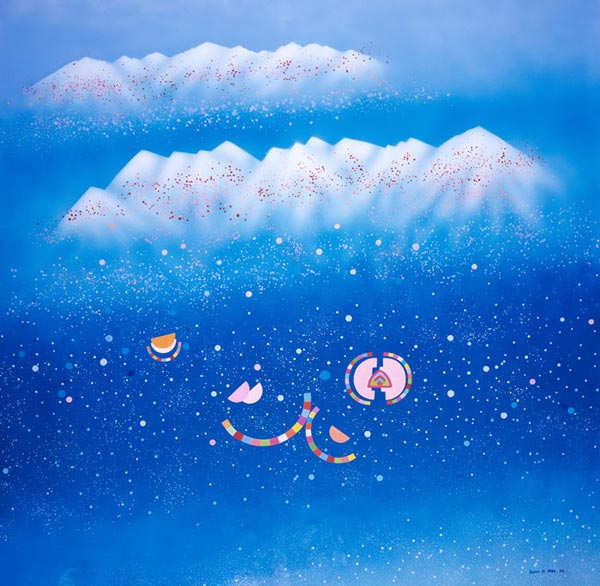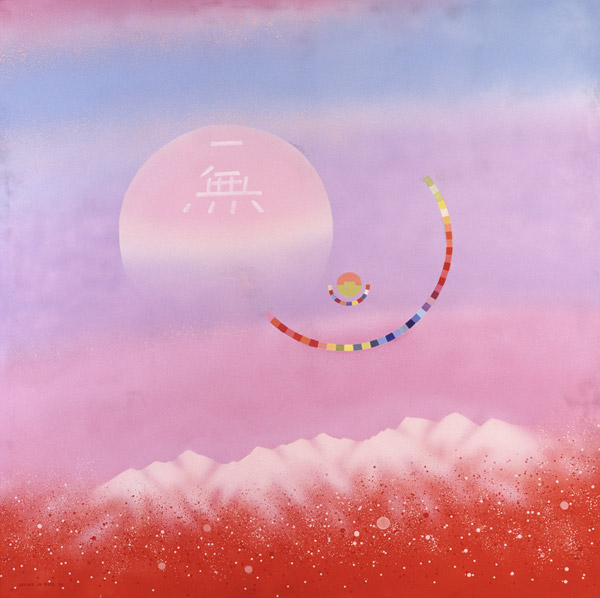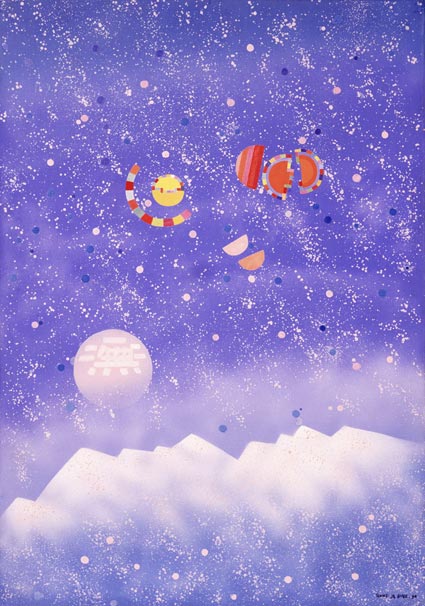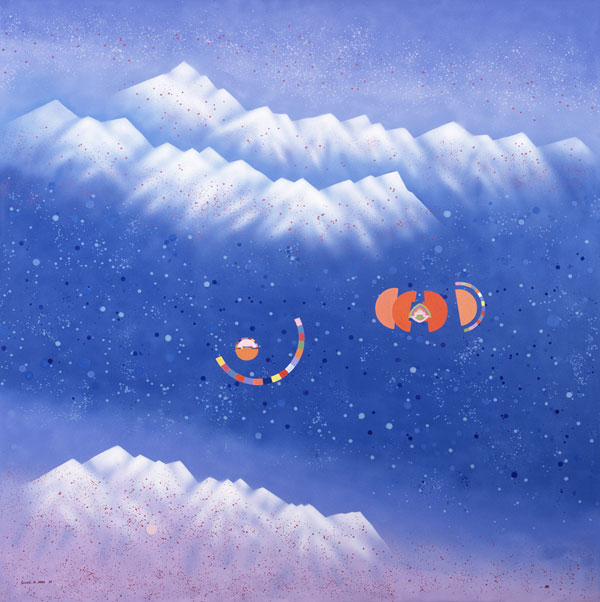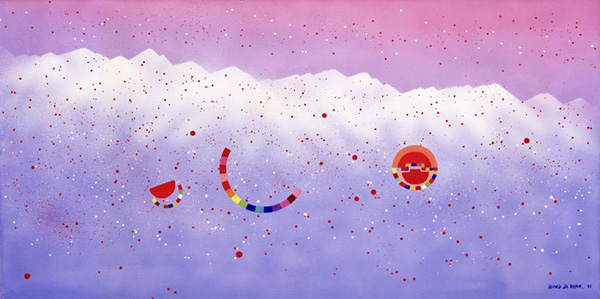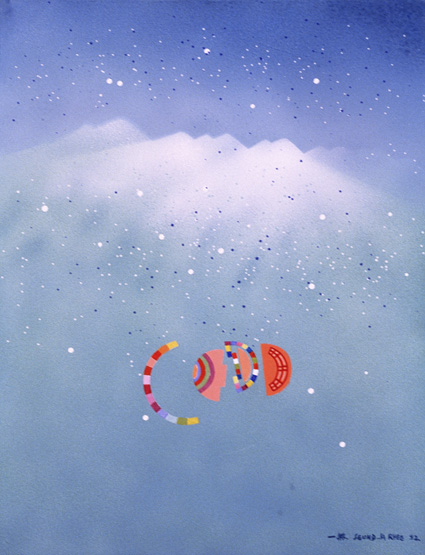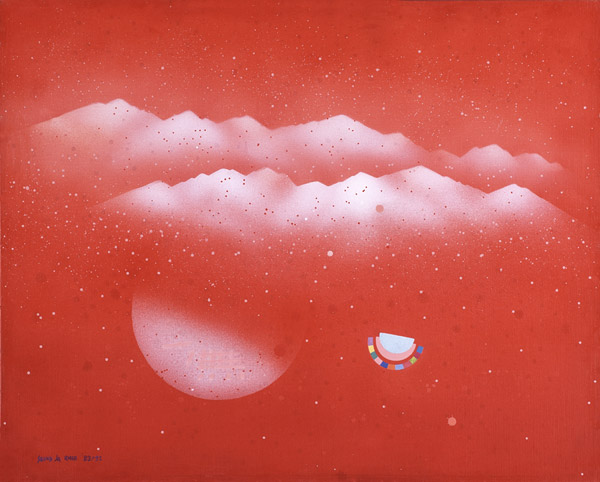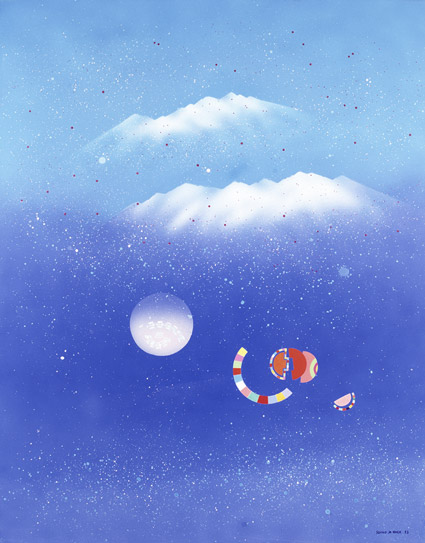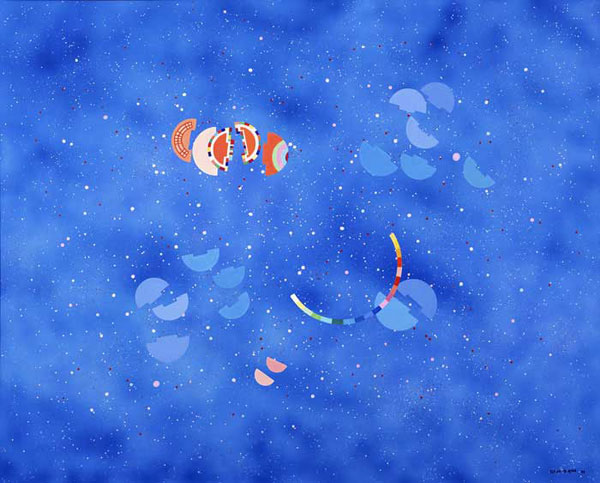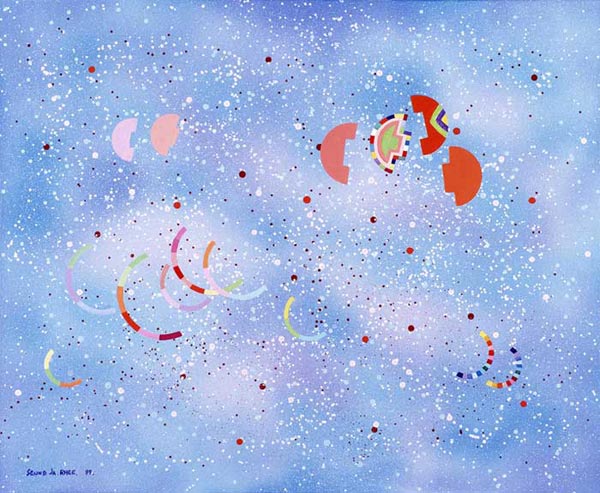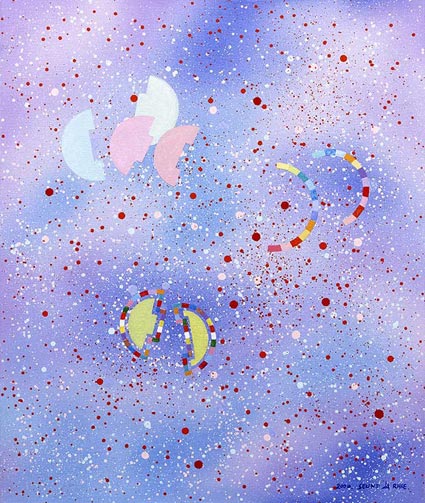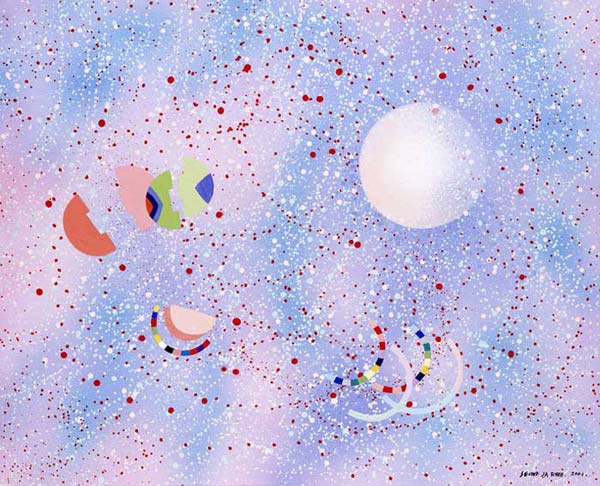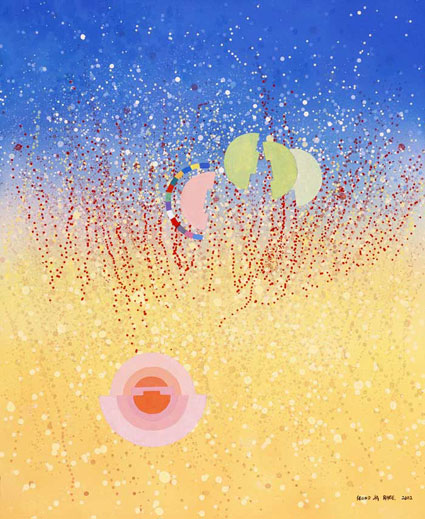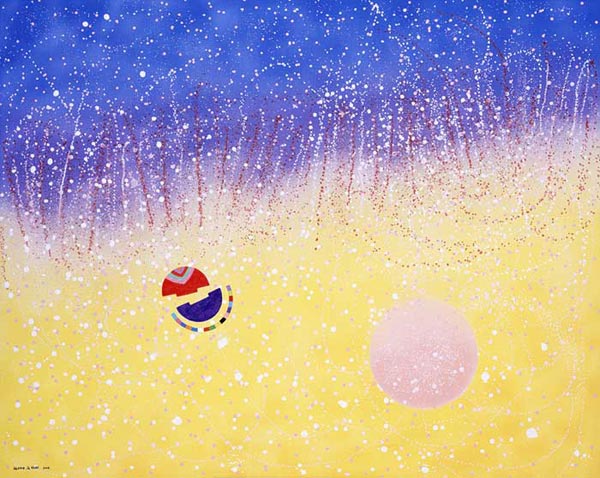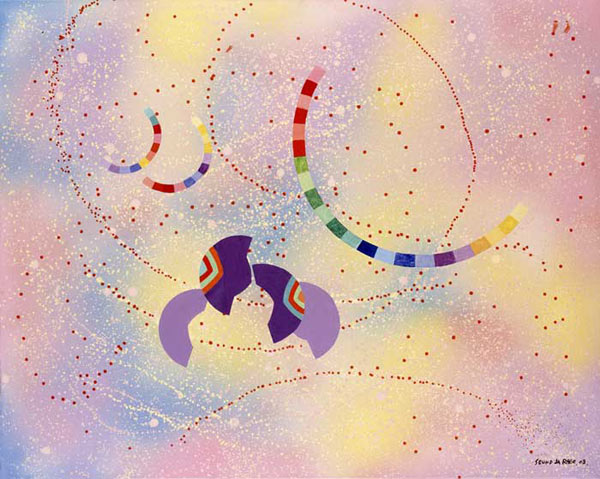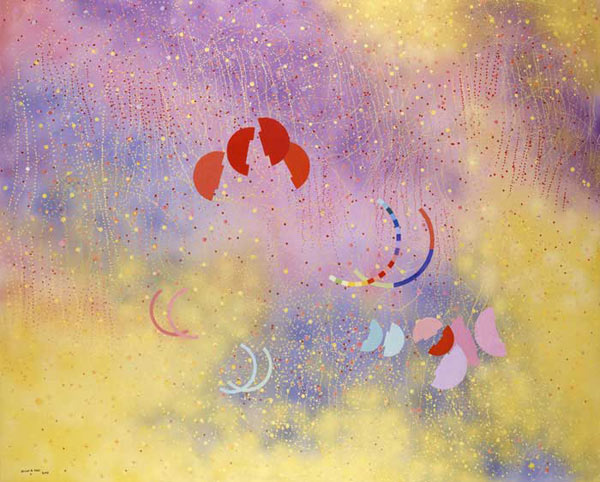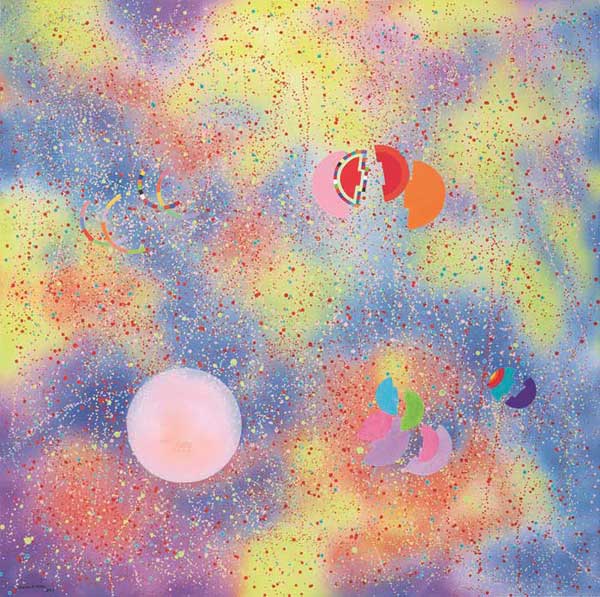PAINT
Figurative Art Period
The distinguished features of Rhee's works throughout the figurative art period are the strong composition and structural features that reflect the teaching she received during her studies at the Académie de la Grande Chaumière. Peering into her works, we can see that she was not merely leaning into an experimental foray into Western art, but was already showing marks of a unique painting quest through free expression. On a 1956 trip to the Netherlands, the port of Amsterdam left a deep impression on her that she immediately created harbor series and this later played an important role in transitioning to abstract art.
Abstract Period
The layers of her work are dense and filled with feeling her thick touch of the period, and the matiere can be seen as a superficial corollary with the earlier works of her representational art period. There are minute changes in her sense of color but she at times uses a broad monochromatic application to create a liberal contrast that breaks this harmony.
Along this line of prolongation see continued through the late 60s to bring form to this theme of “Women and Earth.” Figurative motifs had completely vanished from her work and instead imbued her canvas with the idea of intense contrast where new tones were now beginning to bloom. This was the period in which a geometric structure based on the square would be joined by many symbols that would take the reins of the whole work.
Along this line of prolongation see continued through the late 60s to bring form to this theme of “Women and Earth.” Figurative motifs had completely vanished from her work and instead imbued her canvas with the idea of intense contrast where new tones were now beginning to bloom. This was the period in which a geometric structure based on the square would be joined by many symbols that would take the reins of the whole work.
Woman and Earth Period
“I don’t know anything except myself being a woman. I only know of the earth that covers fireballs of high temperature with its soil, accepting quietly storms and raging billows, while giving life to all things.”
1960 Solo exhibition at Galerie Cavalero, Cannes
To Seundja Rhee, creation is a work that demands ability to concentrate and patience like sewing or hand-weaving, and precious fruit earned from labor weaving a fabric through a loom. Just as a mother raises her children, she birthed new forms that richly fostered on the canvas and woodblock. Bringing out rake marks in the contrast color above the monochromatic base is what corresponds to the unending cultivation of the earth and expresses a Korean tone through the life-force of that even when covered and layered upon, relentlessly comes back.
1960 Solo exhibition at Galerie Cavalero, Cannes
To Seundja Rhee, creation is a work that demands ability to concentrate and patience like sewing or hand-weaving, and precious fruit earned from labor weaving a fabric through a loom. Just as a mother raises her children, she birthed new forms that richly fostered on the canvas and woodblock. Bringing out rake marks in the contrast color above the monochromatic base is what corresponds to the unending cultivation of the earth and expresses a Korean tone through the life-force of that even when covered and layered upon, relentlessly comes back.
Superimposition Period
Seundja Rhee visited New York in 1969. Impressed by its commanding appearance and the forest of skyscrapers on the journey from Washington to New York, she opened her eyes to a new motif. During the trip, she heard the news of her mother’s sudden death. Later, all motives that constitute works of “Women and Earth” came to coalesce and throw open a new chapter of superposition period. This period became a transition period, moving from “Women and Earth” to the “City” and embodying a new birds-eye view.
The City Period
“There is neither a beginning nor an end, neither affirmation nor denial in a circle, as if in our lives. That is what our future city should pursue.”
Rhee’s future city focused on harmony, takes a “circle” not a “rectangle,” which is dominated by fixed forms, as its method of expression. The circle, having a shape of cell nucleus symbolizes the structure of cell, the origin of life, and its division, and indicates the movement of the planets in the universe. This city functions as not just a physical space necessary for maintaining life, but as a space where a source of new energy is conceived.
Rhee’s future city focused on harmony, takes a “circle” not a “rectangle,” which is dominated by fixed forms, as its method of expression. The circle, having a shape of cell nucleus symbolizes the structure of cell, the origin of life, and its division, and indicates the movement of the planets in the universe. This city functions as not just a physical space necessary for maintaining life, but as a space where a source of new energy is conceived.
Yin and Yang, the Period of Transcendence
The concept of what Rhee sought to express through Yin and Yang is interpreted as the union of two contrasting elements: machines and nature, life and death, East and West. She desires to bring about the harmonious union of conflicting elements by expressing not a perfect circle, but two divided circles alluding to the possibility of unity. The energy generated from the unity of contrasting elements embodied in the union of contrasting materials, like wood and canvas, reveal the “transcendence of time.” By attaching tree branches on the canvas, the artist added three-dimensional features of sculpture to the two-dimensional painting.
The Nature Period
It takes mutual understanding and recognition of the opposite side for two conflicting elements such as two culture, nature and human, and nature and machine to co-exist. Rhee learned such principle from the nature and came to utilize the natural expressions opposite to the fixated and single-tracked composition showed in the previous eras including repetition and city. The image untied with the nature is “her own harmonious territory,” cultivated by her, that encompass the East and the West, overcoming the limit of being exotic or ethnic.
In terms of form, unlike previous bird’s-eye view looking down from the sky, “mountains” revealed in a more realistic way appear and the majority part of canvas, which she nurtured as if cultivating the ground, was occupied with the sky at a juncture of the night of Tourrettes.
In terms of form, unlike previous bird’s-eye view looking down from the sky, “mountains” revealed in a more realistic way appear and the majority part of canvas, which she nurtured as if cultivating the ground, was occupied with the sky at a juncture of the night of Tourrettes.
Road of the Antipodes Period
“Now, the road to the polar regions is the road to Korea. It is the road returning to France. It is the longest road. It is the freest road. It is the purest road. And it is the most fantastic road. When a plane fly above the North Pole, passing by Greenland covered with perpetual snowfield, a grand sun is rising above the horizon. Clean air transforms morning dews, which hit the window. At that moment, I was born.”
Rhee’s gaze has left “ground” completely, and fixates at on the “sky.” The artistic origin of "A Road of the Antipodes," was a landscape of fantastic Alaska looking down from while on a flight to Korea. The ice caps of a permanent snowfield and fascinating auroras looked down upon from a plane passing in the air above Alaska was like an image of her dream of an ideal city built in the sky.
The color of sky, clean air, and the extensive landscape that increased the pleasure of trip came to occupy an important spot in her art world for more than 10 years following that time. The artist became one with the high space in earnest, going beyond the evanescence of this life.
Rhee’s gaze has left “ground” completely, and fixates at on the “sky.” The artistic origin of "A Road of the Antipodes," was a landscape of fantastic Alaska looking down from while on a flight to Korea. The ice caps of a permanent snowfield and fascinating auroras looked down upon from a plane passing in the air above Alaska was like an image of her dream of an ideal city built in the sky.
The color of sky, clean air, and the extensive landscape that increased the pleasure of trip came to occupy an important spot in her art world for more than 10 years following that time. The artist became one with the high space in earnest, going beyond the evanescence of this life.
Cosmos Period
“It is time to let our mind travel from one work to another, and to comfort ourselves with the song of the grand and magnificent universe.”
To Seundja Rhee, the universe is synonym of the universality. In other words, it is an all-inclusive concept the embraces the comprehensive beauty of the earth and the heavens amid the endless movements that bring continuity to life. The artist herself is also a part belonging to the universe. Rhee’s works in the 2000s show the highest level of harmony mixed with Yin and Yang, exuding liveliness greater than ever. Yellow, purple, orange color clouds unfold as if sprouts come out in spring, giving vitality to the canvas, while numerous and colorful stars swirl around, exuding light, shuddering.
To Seundja Rhee, the universe is synonym of the universality. In other words, it is an all-inclusive concept the embraces the comprehensive beauty of the earth and the heavens amid the endless movements that bring continuity to life. The artist herself is also a part belonging to the universe. Rhee’s works in the 2000s show the highest level of harmony mixed with Yin and Yang, exuding liveliness greater than ever. Yellow, purple, orange color clouds unfold as if sprouts come out in spring, giving vitality to the canvas, while numerous and colorful stars swirl around, exuding light, shuddering.


